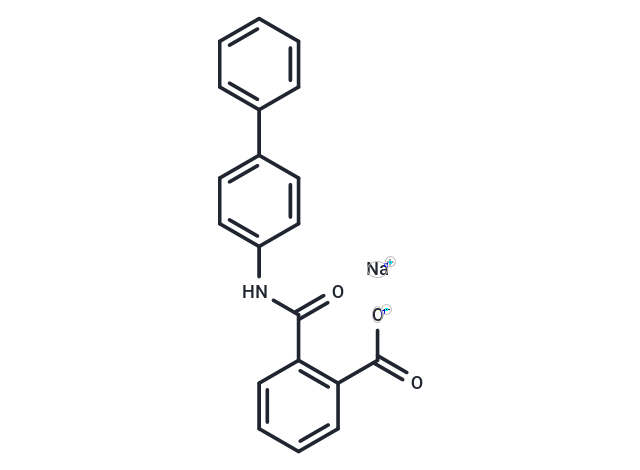- Remove All
 Your shopping cart is currently empty
Your shopping cart is currently empty
Kartogenin sodium
Kartogenin (KGN) sodium acts as an inducer of chondrogenic tissue formation (EC 50: 100 nM). It promotes chondrogenesis by binding to fibrin A, disrupting its interaction with the transcription factor core binding factor beta subunit (CBFβ), and modulating the CBFβ-RUNX1 transcriptional program. Additionally, Kartogenin sodium aids tendon-bone junction (TBJ) wound healing by stimulating collagen synthesis. It is extensively utilized in cell-free therapies for cartilage regeneration and protection, tendon-bone healing, wound healing, and limb development. The compound is also vital for cartilage repair, coordinating limb development, and osteoarthritis (OA) research [1] [2] [3] [4].

Kartogenin sodium
| Pack Size | Price | Availability | Quantity |
|---|---|---|---|
| 10 mg | Inquiry | 10-14 weeks | |
| 50 mg | Inquiry | 10-14 weeks |
Product Introduction
| Description | Kartogenin (KGN) sodium acts as an inducer of chondrogenic tissue formation (EC 50: 100 nM). It promotes chondrogenesis by binding to fibrin A, disrupting its interaction with the transcription factor core binding factor beta subunit (CBFβ), and modulating the CBFβ-RUNX1 transcriptional program. Additionally, Kartogenin sodium aids tendon-bone junction (TBJ) wound healing by stimulating collagen synthesis. It is extensively utilized in cell-free therapies for cartilage regeneration and protection, tendon-bone healing, wound healing, and limb development. The compound is also vital for cartilage repair, coordinating limb development, and osteoarthritis (OA) research [1] [2] [3] [4]. |
| In vitro | Kartogenin sodium (100 nM; 72 h) induces the formation of chondrocyte aggregates in primary hMSCs [1]. At concentrations ranging from 10 nM to 10 μM over 72 hours, it increases the expression of chondrocyte-specific genes in hMSCs [1]. Kartogenin sodium (0.12-10 μM; 48 h) inhibits cytokine-induced nitric oxide (NO) and glycosaminoglycan (GAG) release in primary bovine articular chondrocytes [1]. Additionally, concentrations of 50 to 5000 nM over a period of 2 weeks induce chondrogenic differentiation in BMSCs in a dose-dependent manner [2]. |
| In vivo | Kartogenin sodium (10 μM, dissolved in 4 μL saline; administered on day 7 and day 21) enhances cartilage repair in a collagenase VII-induced mouse model of osteoarthritis [1]. |
| Alias | KGN sodium |
| Molecular Weight | 339.32 |
| Formula | C20H14NNaO3 |
| Cas No. | 1401168-39-5 |
| Storage | Powder: -20°C for 3 years | In solvent: -80°C for 1 year | Shipping with blue ice. |
Calculator
In Vivo Formulation Calculator (Clear solution)
Dose Conversion
Tech Support

Copyright © 2015-2025 TargetMol Chemicals Inc. All Rights Reserved.




